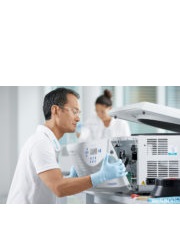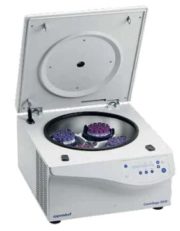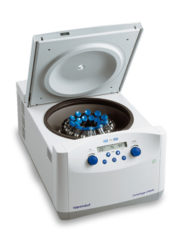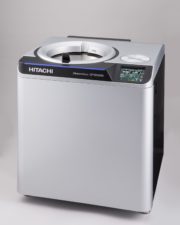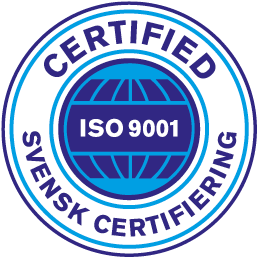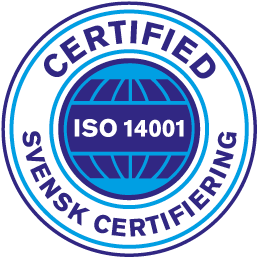Biosäkerhet
Biosäkerhet
Centrifugering handlar om mer än bara att snurra runt. Speciellt när man arbetar med farliga ämnen måste man ta hänsyn till fler faktorer än bara tid, hastighet och temperatur. Här kan du lära dig mer om dessa faktorer.
042-300 91 30
Frågor? Ring kundtjänst
Centrifugation is more than just spinning: Especially when working with hazardous substances, there are more factors to consider than just time, speed and temperature. Learn more about these factors in the following chapters.
Imagine you heard from someone that you were surrounded by millions of microorganisms. At home, at work, in the gym, even in nature: Every day they are there. Sounds scary doesn’t it? These microorganisms that surround us are called airborne biological particles or just bioaerosols for short and are categorized under the general term aerosols. You’ve heard that word before, right? Just as a refresher, aerosols are generally defined as “colloidal systems of (liquid or solid) particles suspended in a gas (usually air).”
Related files
- PDF Poster: Stay informed – Aerosols 11211.3 KB
But what does that really mean?
Well, you come in contact with aerosols every day: deodorants, cigarette smoke, dust, and exhaust emissions. These are all aerosols we constantly encounter when we live in an urban environment. We call them aerosols of anthropogenic origin. Hardly anyplace in the world is free of anthropogenic aerosols, and we inhale them continuously. But aerosols also originate in nature: fog, sand, forest exudates, and sea spray are just a few examples. In nature, airborne dust consists of up to about 25 % biological particles; in urban and agriculturally dominated areas, this percentage is usually higher.
In this text, we will focus on bioaerosols because they are the most interesting type of aerosols to those working in labs.
Bioaerosols
A bioaerosol is an aerosol comprising particles of variable biological origin. This can be fungal spores, pollen grains, endotoxins, or particles of animal dander. Bioaerosols are complex mixtures consisting of several components that can stem from simple organic molecules (dimensions in the nanometer range), viruses, bacteria and bacterial spores, mold spores and hyphae, pollen (with diameters as small as 100 micrometers), and animal and plant debris (of various sizes). It’s easy to imagine the kind of critical role these bioaerosols can play in your daily laboratory work! Aerosolization not only takes place through wind and spray and through breathing, speaking, coughing, and sneezing; it also occurs through lab activities such as pipetting, centrifuging, opening of ampoules, and shaking – just to name a few.
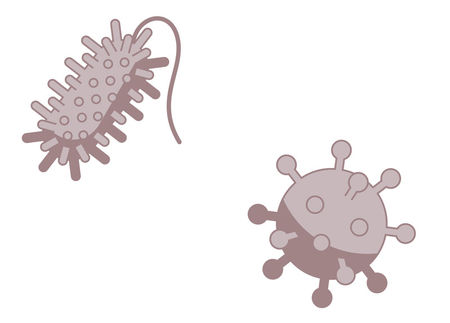
We differentiate among different sizes of aerosols
Droplets (aerosols larger than 100 micrometers) tend to land on the ground before they evaporate. These droplets can cover surfaces (like tables, instruments, etc.) and contaminate them. They therefore constitute a source of staff exposure to infections.
Dust (10 to 100 micrometers) and droplet nuclei (smaller than 10 micrometers) are very small aerosols. Droplet nuclei consist of bacteria (or another biological agent) in a droplet. When the droplet fluid evaporates, the bacteria remain in a dried state. This is a form of bioaerosol.
They are so small and light, they may remain suspended in the air for several hours. Also, air currents can widely disperse airborne droplet nuclei.
Generally speaking, the settling velocity (the number of microorganisms that settle on a petri dish in a given time) of aerosols can vary greatly and depends on the particle type. The greater the settling velocity, the lower the risk of exposure to the operator. This is because the bigger the particle, the greater is the settling velocity and vice versa.
This means bioaerosols can potentially expose personnel in two different ways. To understand this, consider this: The human respiratory tract is as big as a tennis court. With every breath, millions of particles come into contact with our respiratory tract.
Some of the particles, especially the ones smaller than four micrometers, will gain access to lung tissue. And some can even reach our bloodstream. Ingestion and dermal contact is also possible with larger droplets that contaminate the surface of laboratory equipment and other surfaces in the lab.
Very common laboratory activities produce aerosols, and we only mention a few of them in this text. Often, lab activities are carried out without even thinking about aerosols, but around the world there are many documented cases of laboratory-acquired infections resulting from the production and inhalation of infectious aerosols. In your daily laboratory work, centrifugation is just one source of aerosols, and you must take adequate precautions when working with infectious or harmful substances.
During centrifugation, aerosols can escape during the high-speed spin process, for example, if microorganisms are not adequately contained within the centrifuge. This may occur if you spin uncapped samples or if a tube leaks or breaks. In the following, we will provide some advice on minimizing aerosol production while centrifuging.
As a first step, make sure to choose the right centrifuge vessel and consider what precautions to take. The rotor plays an important role in preventing formation of aerosols outside the centrifuge. For this reason, you should know how to clean and disinfect the centrifuge and its accessories after a run and should there be leakage.
Learn more about aerosols and how to work safely with hazardous samples in our Stay Informed Clip “Aerosols in the Lab”.
Working with biological material can sometimes pose a danger to laboratory staff and the environment. For this reason, staff must correctly handle material according established standards. These standards comprise four biosafety levels (BSLs) that typically apply to biological materials. Depending on the level, laboratory staff will have to possess a certain set of skills for handling potentially dangerous material. forming during standard lab procedures like pipetting, mixing, and centrifuging poses the greatest potential risk for infection. To minimize the risk of infection from bioaerosols, primary and secondary barriers are used. A primary barrier could, for instance, be a biosafety cabinet (BSC). A secondary barrier might be an autoclave (BSL-2) or, in a higher-level situation, an installation inside a facility like a dedicated anteroom or ventilation system might serve as the barrier. Infectious material might include bacteria, viruses, cell cultures, parasites, or particular types of fungi. Depending on the security standard in place, special training may be required to handle these infectious materials. The laboratory supervisor is responsible for correctly educating laboratory staff.
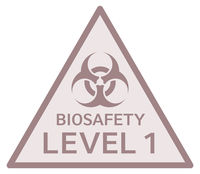
Biosafety level 1 (BSL-1)
BSL-1 is the lowest security level for handling biological material. This kind of material poses no or only a low risk to healthy adult humans and presents minimal potential hazard to laboratory personnel and the environment. BSL-1 laboratories do not have to be separated from the rest of a building. Laboratory workers can do their work on open bench tops, and there is no need to use special equipment. Standard microbiology practices usually suffice to protect laboratory workers and other employees in the building. This means, for example, that no mouth pipetting is allowed and splashes and aerosol formation should be avoided. Spills have to be cleaned up immediately and all work surfaces should be decontaminated each time work is finished. Eating, drinking, and smoking are not allowed in the lab. To protect themselves, workers generally wear eye protection, gloves, and a lab coat. It is recommended that access to the laboratory be limited. In general, an autoclave is only required when working with genetically modified organisms or modified genetic elements (e.g., plasmid vectors). Biohazard signs are posted whenever infectious agents are present.
Examples of typical BSL-1 biological material
- Bacteria: Agrobacterium tumefaciens, Escherichia coli K-12, Pseudomonas fluorescens, Bacillus subtilis
- Viruses: canine adenovirus types 1 and 2, Bovine enterovirus
- Fungi: Saccharomyces cerevisiae
- Certain cell cultures> Endoparasites of animals and humans (e.g., some nematodes)
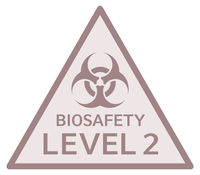
Biosafety level 2 (BSL-2)
All activities in a BSL-2 laboratory require higher security standards than in a BSL-1 laboratory. The biological material used in a BSL-2 laboratory consists of bacteria, viruses, and organisms associated with human diseases. The potential pathogenic or infectious organisms subject to BSL-2 standards pose a moderate hazard to healthy adult humans. However, because of their potential to cause human disease, great care must be taken to prevent percutaneous injury, and employees are subject to regular medical surveillance if necessary. The main difference in the work procedures followed in a BSL-1 laboratory and a BSL-2 laboratory is that employees in a BSL-2 laboratory will use a BSC as a primary barrier for potentially hazardous aerosols. These aerosols are generally formed during standard work procedures like mixing, pipetting, and centrifuging, so these activities should be carried out under a BSC. At a minimum, an autoclave has to be present in the lab as a second barrier. Windows open to the outside are not recommended. A sink for washing hands must be placed in direct proximity to the exit door. The laboratory should be easy to clean and decontaminate. Inside the laboratory, special lab coats, gloves, and face and eye protection should be worn. Special precaution must be taken with sharps that can cause injury. Access to BSL-2 laboratories must be restricted.
Examples of typical BSL-2 biological material
- Bacteria: Chlamydia pneumoniae, Enterobacter spp., Mycoplasma pneumonia, Yersinia pseudotuberculosis
- Viruses: Herpes simplex virus, HIV (when performing routine diagnostic procedures or working with clinical specimens)
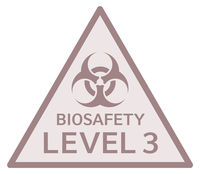
Biosafety level 3 (BSL-3)
BSL-3 involves handling indigenous or exotic agents that may cause serious or potentially lethal diseases through inhalation and/or pose a serious threat to the environment. Compared with the BSL-2 lab, BSL-3 labs require additional security precautions: Only limited access to the laboratory is allowed. Moreover, laboratory personnel remain under medical surveillance and are offered appropriate immunizations for the agents handled or potentially present in the laboratory. All laboratory waste has to be disinfected, and the clothes worn in the lab must be decontaminated before laundering. Walls, ceilings, and windows must be sealed, and floors must be nonskid and resistant to chemicals. The design, operational parameters, and procedures of a BSL-3 facility must be verified and documented prior to the start of operations. Facilities must be documented and verified again a minimum of once a year. In terms of a primary barrier, all open manipulations of biological material must be done under a BSC (preferably Class II or Class III) or in a closed containment system, and special protective clothing must be worn. BSL-3 laboratories must have separate exits with self-closing doors as the second barrier. Moreover, an air-ventilation system providing negative air flow is required that does not recirculate exhaust.
Examples of typical BSL-3 biological material
- Bacteria: Yersinia pestis, Brucella abortus, Chlamydia psittaci, Pseudomonas mallei
- Viruses: West Nile fever, herpes B, hepatitis A

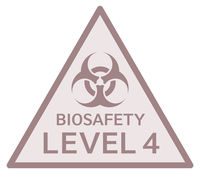
Biosafety level 4 (BSL-4)
BSL-4 entails handling very dangerous and exotic biological material that may cause infection inside the laboratory as the result of aerosols. Other agents can have a very similar antigenic relationship to existing BSL-4 material, but there is insufficient data available to designate the level for these agents. Biological material also handled at this level relates to existing infectious material where the disease transmission is unknown. In addition to the precautions taken at the BSL-3 level, BSL-4 requires additional protection: All clothes must be changed before entering the lab, and employees must shower before leaving. In terms of primary barriers, all work has to be carried out in a Class III BSC or in a Class I or II BSC in combination with the lab worker wearing a full body, air-supplied positive pressure suit. A BSL-4 laboratory is usually located in a separate building or in a specific insolated area of a building; this isolation serves as a second barrier. This level also requires dedicated supply and exhaust ventilation equipment with vacuum and decontamination systems. Depending on the material and requirements, special installation might also be necessary.
Examples of typical BSL-4 biological material
- Ebola-Virus, Lassa-Virus, Marburg-Virus
Requirements for standard laboratory equipment in BSL labs
Centrifugation
- Centrifuge vessels (aerosol-tight vessels required): decontamination after use required; as an alternative, sterile, single-use vessels may be used
- Aerosol-tight rotors
- Aerosol-tight caps that can be removed from the centrifuge for secure transport
- Use of vessels with high thermal, centrifugation, and chemical stability
- Imbalance sensors and emergency stop feature
- Detailed information in the operating manual about correct loading of the rotor
- Appropriate cleaning and disinfection protocols for rotors and rotor chambers provided by the manufacturer
- Clear manufacturer instructions for opening the centrifuge lid should power fail
Mixing
- Appropriate mixing technology used by the mixer to avoid splashes
- Use of robust, tight-closing, single-use vessels that can be autoclaved
- Use of vessels with high thermal and chemical stability
Incubation
- Regular filter checks
- No fan inside to avoid contamination
- Easy-to-clean chamber
- Copper chamber to avoid contamination
Pipetting
- Cleaning and disinfection procedures provided by the manufacturer
- Nonreactive pipettes that can be autoclaved
- Handling information provided by the manufacturer to avoid contaminations (air-cushion pipettes)
- Use of filter tips to avoid contamination of pipette interior
- Use of positive displacement tips to avoid contamination
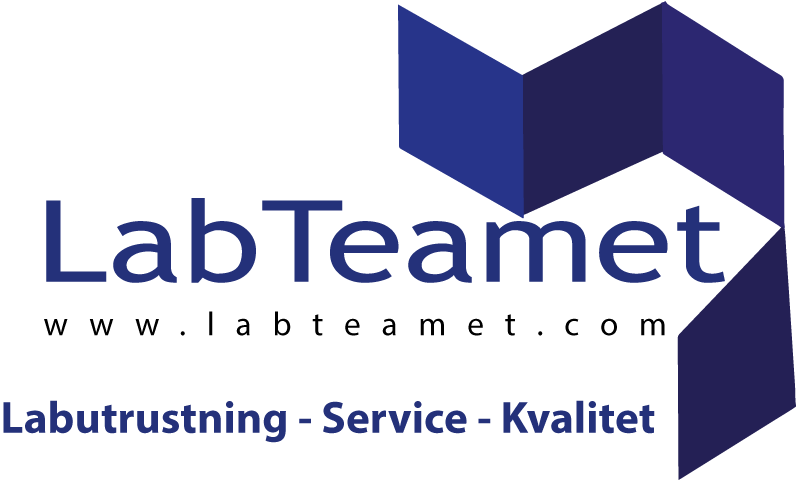
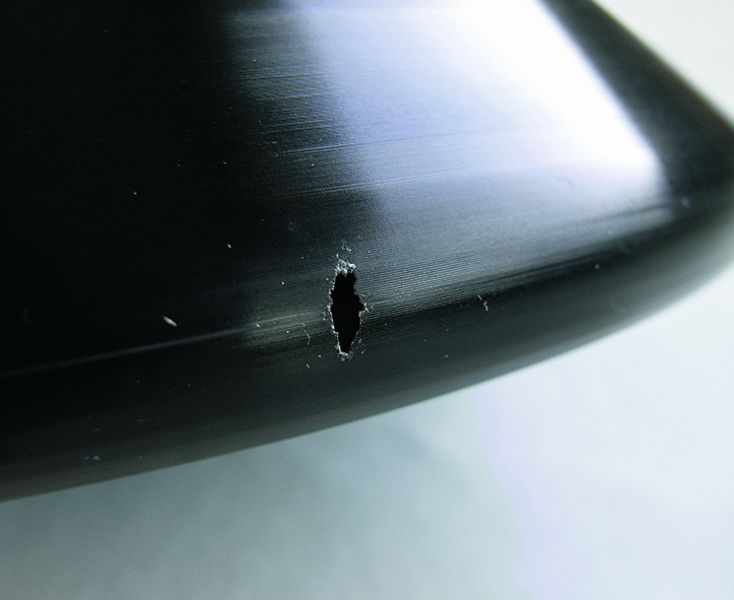
 The vessel’s material was not resistant to the liquid that was centrifuged.
The vessel’s material was not resistant to the liquid that was centrifuged.